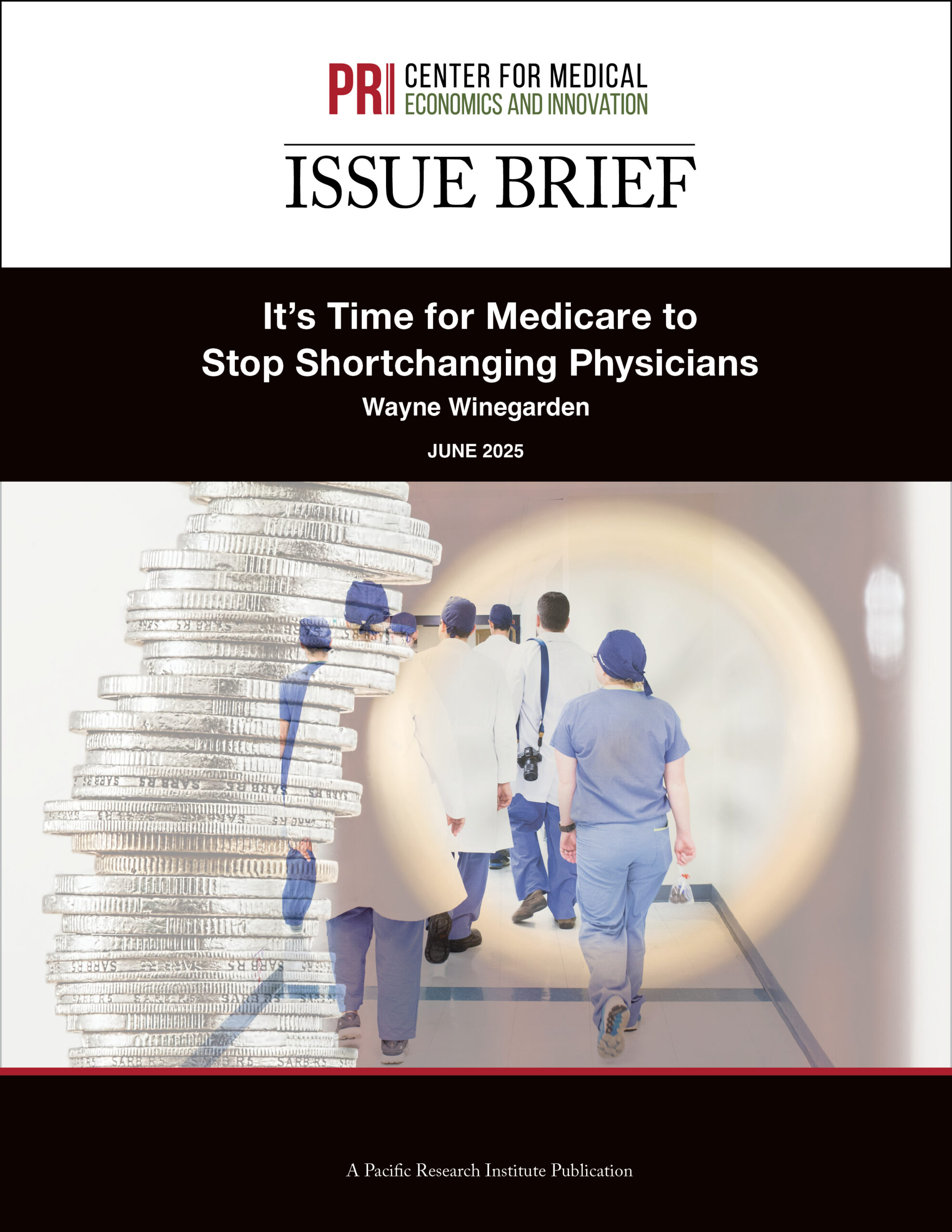The Pacific Research Institute’s Center for Medical Economics and Innovation today released a new issue brief warning that continued federal underpayment of doctors is fueling a looming healthcare crisis by accelerating the nation’s physician shortage and undermining access to care.
Written by PRI senior fellow in business and economics and CMEI director Dr. Wayne Winegarden, the brief (titled “It’s Time for Medicare to Stop Shortchanging Physicians”) finds that Medicare reimbursement rates are well below market value and have failed to keep up with inflation or the rising costs of running a medical practice. This undercompensating is leading doctors to leave the profession, dissuading medical students from entering the field, and contributing to longer wait times and diminished care quality for patients.
“Medicare has effectively imposed income controls on doctors,” said Winegarden. “These unsustainably low reimbursement rates are creating a cascade of negative outcomes—discouraging private practice, worsening the doctor shortage, and ultimately threatening the quality of care patients receive.”
Key findings from the brief include:
- Inflation-Adjusted Physician Pay Has Plummeted: Since 2001, inflation-adjusted Medicare payments to physicians have declined by 33%.
- Physician Shortages Are Growing: The U.S. currently faces a shortage of 37,000 doctors—a number projected to rise to 86,000 by 2036.
- Reimbursement Gaps Distort the Market: Medicare pays hospitals more than independent doctors for the same services, incentivizing costly consolidation and reducing patient choice.
- Medical School Applications Are Falling: Applications declined for a third straight year in 2024 and are now at their lowest level since 2017.
“Patients are paying the price for Washington’s broken physician payment system,” said Winegarden. “We must modernize Medicare to reward value, preserve choice, and support the financial viability of independent physicians.”
The brief offers both long-term and short-term reforms. Winegarden proposes moving Medicare toward a direct payment model that empowers seniors with health savings accounts and lets doctors compete on value. At current expenditure levels, Winegarden argues that Medicare could provide beneficiaries with $15,151 that they could then use to purchase health insurance and pay directly for their health care needs.
Near-term fixes include indexing physician payments to the cost of running a medical practice to prevent continued income erosion, ending site-based reimbursement disparities, and supporting value-based care experiments.
“If we don’t fix Medicare’s pricing system, America’s doctor shortage will only get worse,” said Dr. Winegarden. “Reforms that align payments with economic reality are essential for ensuring that patients can access high-quality care when they need it.”

